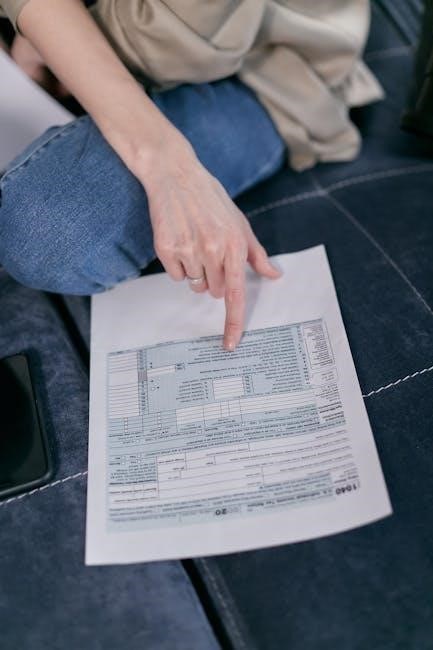LPA preferences and instructions provide guidance on managing finances and personal care, using
- ordered lists
to outline specific wishes and expectations clearly in the document every time.
Understanding the Purpose of LPA Preferences and Instructions
The purpose of LPA preferences and instructions is to provide guidance on how to manage one’s finances and personal care in the event of incapacity, using a combination of
- unordered lists
and
- ordered lists
to outline specific wishes and expectations. This guidance is typically included in a Lasting Power of Attorney (LPA) document, which is a legal document that appoints one or more individuals to make decisions on behalf of the donor. The preferences and instructions outlined in the LPA document serve as a framework for the appointed attorneys to follow, ensuring that the donor’s wishes are respected and carried out. By including preferences and instructions in an LPA, individuals can maintain control over their finances and personal care, even if they become unable to make decisions for themselves. This approach provides peace of mind and helps to avoid potential conflicts or disputes.

Examples of Preferences in Property and Finance LPA
Examples include donating to charity, ethical investments, and managing property assets carefully always.
Specific Examples of Preferences for Property and Finance
Specific examples of preferences for property and finance include donating a certain amount to charity each month, investing in ethical companies, and managing property assets carefully. These preferences can be outlined in a table or
- ordered list
to make them clear and easy to understand. It is also possible to specify preferences for the management of bank accounts and other financial assets. For example, an individual may prefer to keep a certain amount of money in a savings account or to invest in a specific type of stock or bond. By including these preferences in a Property and Finance LPA, individuals can ensure that their financial affairs are managed in accordance with their wishes. This can provide peace of mind and help to prevent disputes or misunderstandings in the future. Preferences can be general or specific, depending on the individual’s needs and circumstances.

Examples of Preferences in Health and Welfare LPA
Health and welfare LPA preferences include living near family, receiving regular pedicures and manicures using specific care services.
Differences Between Instructions and Preferences in LPA
The main difference between instructions and preferences in LPA is that instructions are mandatory, while preferences are guidance. Instructions must be followed by attorneys, and are usually indicated by words such as must or shall. Preferences, on the other hand, are not legally binding, and attorneys are not required to follow them. This distinction is important, as it allows individuals to provide guidance on their wishes, without restricting the ability of their attorneys to make decisions. Using
- unordered lists
and
- ordered lists
can help to clarify the differences between instructions and preferences, and ensure that they are understood correctly. By understanding the differences between instructions and preferences, individuals can create an LPA that accurately reflects their wishes, and provides clear guidance for their attorneys. This can help to prevent disputes, and ensure that their affairs are managed in accordance with their wishes.

Creating a Letter of Wishes or Side Letter for LPA
Using a separate document to outline wishes and expectations clearly every time.
Importance of Understanding Instructions and Preferences in LPA
Understanding instructions and preferences in LPA is crucial for ensuring that an individual’s wishes are respected and carried out. The Mental Capacity Act 2005 provides a framework for creating LPAs, and it is essential to comprehend the differences between instructions and preferences. Instructions are mandatory and must be followed by attorneys, whereas preferences provide guidance but are not legally binding. Using clear language and specific examples can help to avoid confusion and ensure that instructions and preferences are understood correctly. It is also important to review and update LPAs regularly to reflect changing circumstances and wishes. By understanding the importance of instructions and preferences, individuals can create effective LPAs that protect their interests and promote their well-being. This involves using
- ordered lists
and
- unordered lists
to outline specific wishes and expectations clearly in the document.

Legally Binding Nature of Instructions in LPA
Instructions in LPA are legally binding and must be followed by attorneys using relevant laws and regulations always.
Guidance on Writing Effective Preferences and Instructions for LPA
To write effective preferences and instructions for LPA, consider using a step-by-step approach and consult with relevant parties, such as attorneys and family members, to ensure clarity and accuracy.
Using clear language and avoiding ambiguity is crucial in conveying one’s wishes and expectations.
It is also essential to review and update preferences and instructions regularly to reflect changing circumstances and priorities.
Additionally, seeking guidance from
- legal professionals
or experts in the field can help individuals create comprehensive and effective LPA documents that meet their specific needs and requirements.
By following these guidelines and using available resources, individuals can create LPA preferences and instructions that provide clear direction and support for their attorneys and loved ones.
Effective communication and planning are key to ensuring that one’s wishes are respected and carried out as intended.

